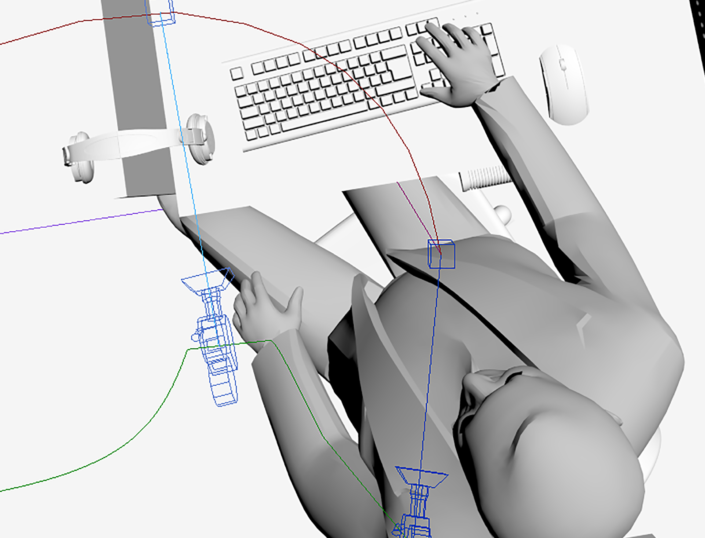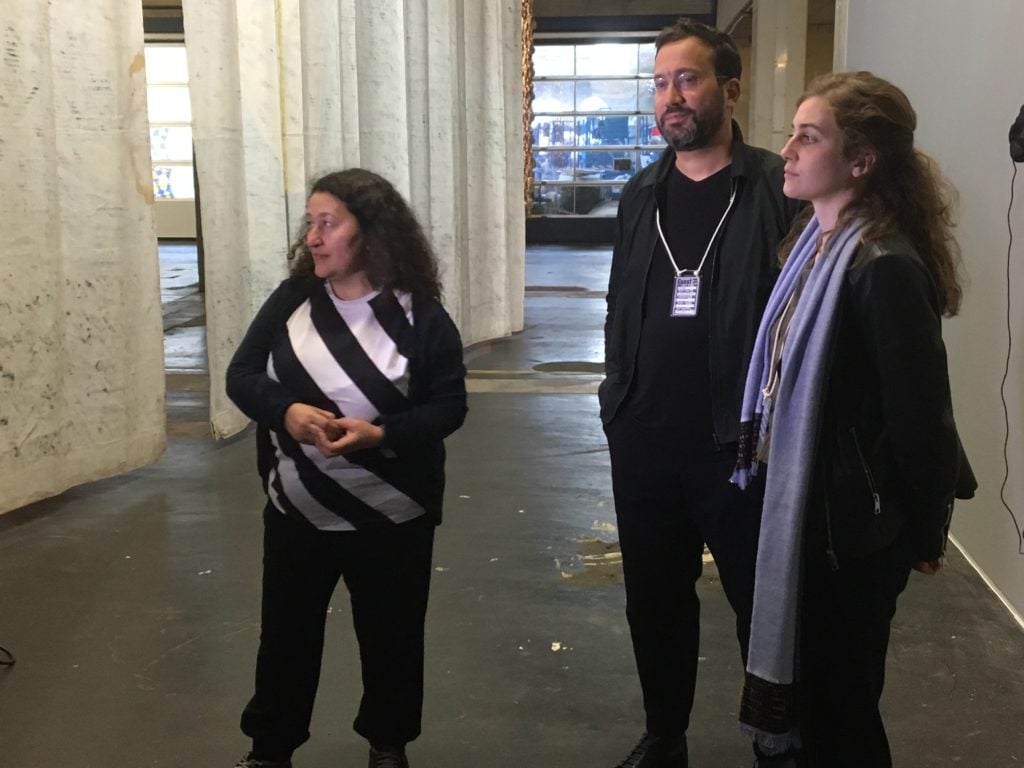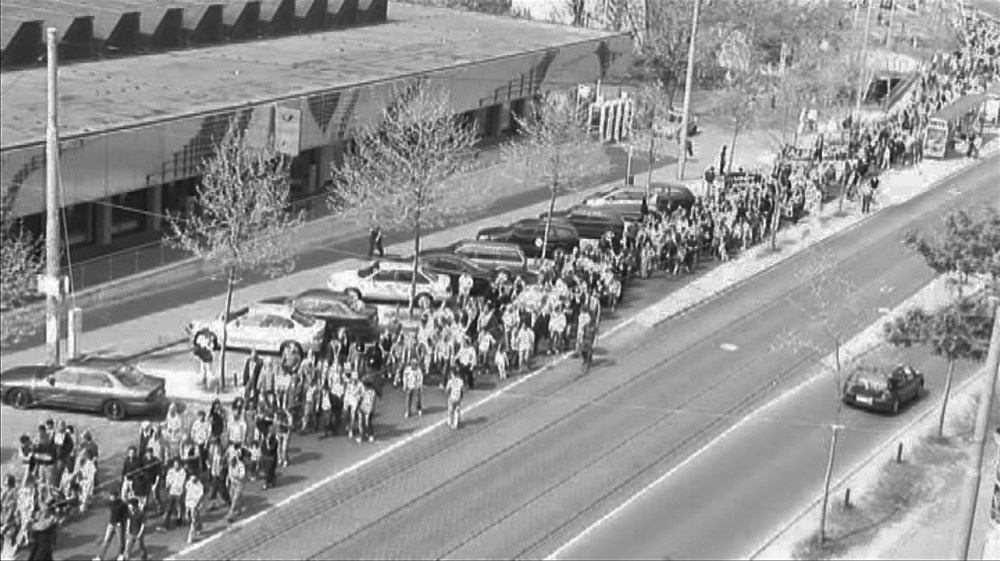Reviews
The Most Important Piece at documenta 14 in Kassel Is Not an Artwork. It’s Evidence.
An analysis of a neo-Nazi murder investigation redefines the limits of what art is for.

An analysis of a neo-Nazi murder investigation redefines the limits of what art is for.

Hili Perlson

The highly anticipated preview of documenta 14 in Kassel opened to members of the press yesterday, June 7, following an over-two-hour-long press conference heavy on political statements that amounted to little more than preaching to the choir.
It’s not difficult to agree, of course, with Adam Szymczyk and his team’s ideas, where patriarchy, the dark legacies of colonialism, and any sort of Othering ought to be defenestrated, preferably along with capitalism while we’re at it. But that makes it all the more frustrating to speak of effecting change through art, when documenta’s curatorial team uses the same language and means that may have been more relevant in 2013—the time when this year’s quinquennial was conceived. The world is a very different place now, and the available tools have dulled with time.
Shaking the sense of helplessness in the face of injustice, a single project stood out during the preview, while also stretching the definition of what may constitute an artwork. Presented in the Neue Neue Galerie, a location not far from the central Königsplatz, are the results of the investigation conducted by Forensic Architecture, a London-based research agency. The group collaborated with the Society of Friends of Halit, named after Halit Yozgat, who was murdered in Kassel on April 6, 2006.
The 21-year-old Yozgat was the ninth victim of what was later revealed to be a connected series of racially motivated murders carried out by the National Socialist Underground (NSU), a far-right German terrorist group that operated uninterruptedly between 2000 and 2011, committing 10 murders—all but one on citizens with non-German backgrounds—two bomb attacks, and numerous robberies all across the country. The only surviving member of the NSU-trio, Beate Zschäpe, is still on trial in Munich along with suspected accomplices.
When the investigations into the activities of the NSU finally became public, it has surfaced that the German intelligence service had infiltrated the far-right terrorist cell with undercover agents; one of them, Andreas Temme, was present during Halit Yozgat’s murder at his family’s internet café in Kassel. In his various testimonies, however, Temme claims neither to have heard the gunshots that killed Yozgat, nor to have noticed the sharp smell of gunpowder, or seen Halit’s body behind the counter when he left.
Forensic Architecture, which was formed at Goldsmiths by architect Eyal Weizman, has previously investigated war crimes in Gaza, former Yugoslavia, and Syria. They were invited by the organization The People’s Tribunal “Unraveling the NSU Complex” to look into what could possibly be the collusion of a Western European state in violent crimes.

Ayse Gülec (The Society of Friends of Halit), left, Eyal Weizman and Christina Varvia (Forensic Architecture) presenting their collaborative project at documenta 14, Kassel. Photo Hili Perlson
The results of their research, presented here in a video titled 77sqm_9:26min (2017) after the size of the internet café and the length of time that was the subject of police investigation, show that Temme gave a false testimony.
“Art has been very good in the last decades in problematizing the notion of truth, insisting that narratives are more complex than we’re told, that art is about doubt,” Weizman told a small group of press as he presented the project together with Ayse Gülec, of the Society of Friends of Halit, and the project manager of the forensic investigation, Christina Varvia. “We want to show another possibility of art—one that can confront doubt, and uses aesthetic techniques in order to interrogate.”
“I think that no case other than the NSU can demonstrate how necessary it is for civil society to develop its own independent capacity to ask questions, and undertake forensic—or counter-forensic—investigation,” he said. “Forensics is what the state should have done, but hasn’t. The murder is until today, 11 years later, not resolved.” The question here, he stressed, was not only what had taken place, but why was the investigation interrupted.
The material used in the forensic analysis of what had happened in those nine-and-a-half minutes was entirely in the public domain, and arrived mostly from a leak of the police investigation, in 2015. “A murder happened in an internet café, where every witness is connected to a time-coded device! We know the location and timing of each of the five witnesses in the shop during the time of the killing,” he told the press.
“We were told until a month ago that there were 41 seconds during which Temme could have been outside. Well, no longer! We’ve spent eight months on putting a close to that doubt. But closing that now opens another set of questions: If Temme is not telling the truth—and we can say that for sure—what are the roles of the court, the police, secret service, media, and other elements of German society?”
For now, it is for German society to act upon these results. The Munich court where the NSU trial is taking place had initially wanted this forensic testimony, but has decided, “for various legal reasons that are unclear to us,” Weizman said, not to have the evidence be presented in court.
“But the question of how German society deals with the NSU cannot be surrendered to one judge in Munich,” Weizman insisted, undeterred by this technicality. “Counter-forensics, civil society forensics, are about performing the truth in different forums,” he added.

Sefa Defterli, video documentation of the demonstration “No 10th Victim” in Kassel on May 6, 2006 (2006). Courtesy Sefa Defterli, documenta 14.
Such forums have become more visible lately, and the involvement and support of documenta 14 will surely add to the exposure of this case, and the deeper and far-reaching questions it opens up.
In the area where this collaboration is presented in the exhibition space, it is a different film that serves as a point of departure: One month after Yozgat’s murder, his family came together with the relatives of other NSU victims to organize demonstrations in Kassel and Dortmund with the slogan “No 10th Victim.” As the film documentation shows, already back then, in 2006, the families have made the connection between the racist murders taking place across Germany, something that German police, state prosecutors, and the society at large refused to acknowledge until the revelation of the NSU in 2011. The media, shamefully, dubbed the series of cases the “Kebab Murders,” a testament to the institutional and systemic racism in German society.
“When you make a little crack, the crack can grow. From this tiny shop, we hope that further crack lines will occur,” said Weizman. “We think that’s what cultural institutions can and should be doing today. That is to say, an art exhibition is not only about beauty it is also about the truth.”